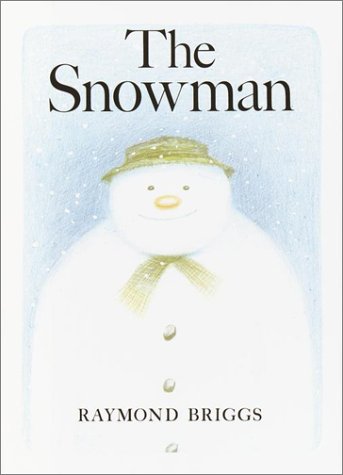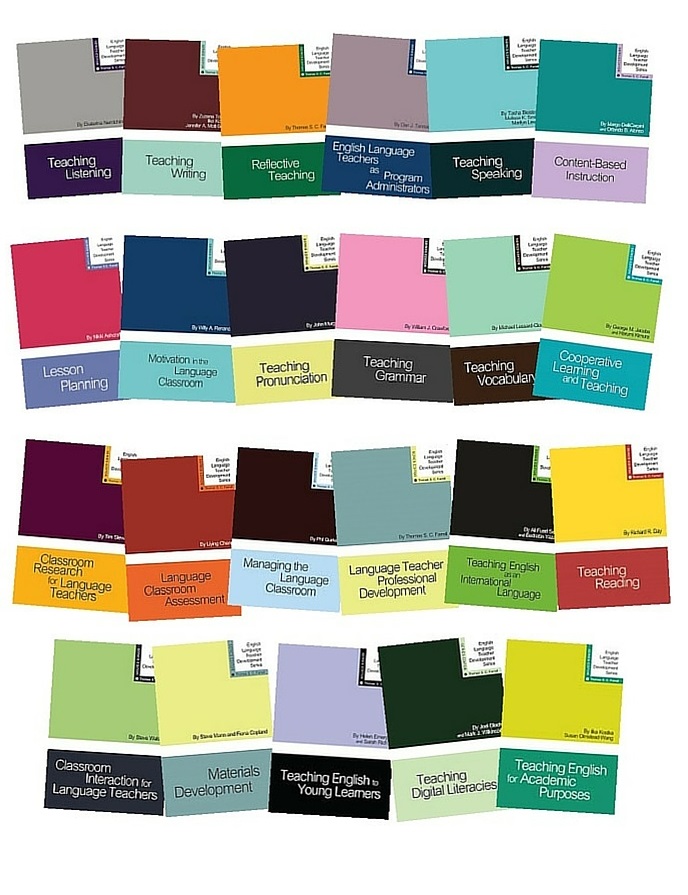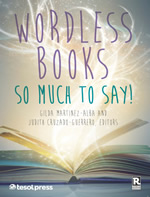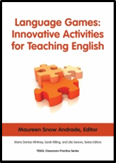A Free Activity From TESOL's Newest Book: Wordless Books: So Much to Say!
Gilda Martinez-Alba and Judith Cruzado-Guerrero, Editors
Wordless books help to develop oral language, listening, vocabulary, and so much more! With wordless books, K–12 and adult students can be authors and write stories that they interpret from the pictures. In addition, the lesson ideas are aligned with the Common Core State Standards for English Language Arts and with the TESOL Pre-K–12 English Language Proficiency Standards. Sample rubrics are included in the book and online as editable documents.
Here is a free lesson plan from Wordless Books: So Much to Say!
 The Snowman The Snowman
by Raymond Briggs
Lesson by Lauren M. Gay
Level: Beginning to advanced
Preparation Time: 5 minutes
Length of Lesson: 50 minutes
Objective: Students will use an original “snow creature” sculpture as inspiration to compose a narrative writing piece which incorporates newly acquired vocabulary.
Materials
- The Snowman by Raymond Briggs (New York, NY: Random House Children’s
Books, 1978)
- Modeling clay
- Paper and pencils
- Computer and digital scrapbooking and photo collage software such as Little
Story Maker, Story Creator, or Pixie
Vocabulary
- balloon
- fire
- flashlight
- flying
- freezer
- heat
- light
Procedure
- Do a picture walk of the story, pausing only for a moment on each page to provide the students an opportunity to gain an understanding of the story’s plot.
- Pass out modeling clay to each student. Instruct the students to create their very own “snow creature.”
- Once the students have constructed their snow creature, have them jot down ideas for a creative narrative about an adventure that they go on with their snow creature.
- Let students use the ideas inspired by the creation of their snow creature to brainstorm and write a creative narrative. To scaffold the activity for beginning ELs, have students draw the scenes of their narrative story and label the activities that they and their snow creature do during their adventure. More advanced ELs could write a detailed description of their adventure that corresponds with their illustrations.
- Finally, let students use a software app that allows for the integration of illustrations and text, such as Little Story Maker, Story Creator, or Pixie, to publish a final copy of their creative narratives.
Assessment
The students’ written creative narrative will be reviewed by the teacher.
|
Download the full lesson plan (PDF), including additional resources and a sample rubric aligned with the Common Core State Standards. |
Buy Wordless Books: So Much to Say! at the TESOL Bookstore.
*This activity may be reproduced for educational uses only.
© TESOL International Association.
TC Monthly Giveaway Congratulations to Marcia Luptak, of Elgin, Illinois, USA for being the winner of the November 2015 TESOL Connections Monthly Giveaway. Marcia has won a free copy of Assessing English Learners in U.S. Schools.
This month, TESOL is giving away
A free registration to the
TESOL Annual Convention
& English Language Expo
in Baltimore, Maryland, USA
5–8 April 2016!

Join TESOL in celebrating its 50th anniversary!
The TESOL annual convention will bring professionals and scholars from around the world to Baltimore. With more than 1,000 sessions, you’ll be able to explore not only teaching techniques that work, but the latest research in the field, the newest software and publications on the market, and just about anything else that supports English language educators.
View all convention details on the TESOL Convention Website
Click here to enter
Drawing closes 27 December 2015, 11:59 pm EST
TESOL Blogs Interested in writing a blog for TESOL?
Read the submission guidelines and send us your post!
Check out the latest TESOL Blogs:
|
Teaching Elementary-Age ELs the Hidden Curriculum, by Judie Haynes
 What is the hidden curriculum? This term encompasses various characteristics of schooling that “everybody knows.” It usually consists of a wide variety of social skills, such as interactions with peers and teachers, and includes the fundamental values and beliefs of a school community. This hidden curriculum needs to be learned by ELs in order for them to succeed socially and academically in school. What is the hidden curriculum? This term encompasses various characteristics of schooling that “everybody knows.” It usually consists of a wide variety of social skills, such as interactions with peers and teachers, and includes the fundamental values and beliefs of a school community. This hidden curriculum needs to be learned by ELs in order for them to succeed socially and academically in school.
How do your ELs discover this underlying curriculum? Do you teach it directly or hope that they will acquire socially appropriate behavior and language simply by being with native English speakers? Read More. |
|
Can We Really “Teach Peace”?, by Kristen Lindahl
 In light of recent violence in the world, I have been pondering the role of educators in this shifting paradigm. As members of an international organization, TESOL professionals can be found in every part of the globe, working with all types of people across differences in age, culture, ethnicity, gender, language, race, and religion. As a group, we are continually touched by events outside of our classrooms, and this requires us to be aware of economic, political, and social affairs that impact us as well as our students. Read More. In light of recent violence in the world, I have been pondering the role of educators in this shifting paradigm. As members of an international organization, TESOL professionals can be found in every part of the globe, working with all types of people across differences in age, culture, ethnicity, gender, language, race, and religion. As a group, we are continually touched by events outside of our classrooms, and this requires us to be aware of economic, political, and social affairs that impact us as well as our students. Read More.
|
|
5 Ways to Make the Most of Written Feedback, by Nathan Hall
 Do you remember getting papers back from your English or composition teachers that were covered in red ink? Did you take the time to decode each individual marking, consider every error, and diligently redraft your paper until it was flawless? Really? You did? Because I remember scanning for my grade, then fixing the mistakes marked by symbols as disinterestedly as if they were math problems—but only when revisions were required. The most frustrating part was that I made mistakes when I knew the correct rule, but somehow I just tapped the wrong key or picked the wrong word. Read More. Do you remember getting papers back from your English or composition teachers that were covered in red ink? Did you take the time to decode each individual marking, consider every error, and diligently redraft your paper until it was flawless? Really? You did? Because I remember scanning for my grade, then fixing the mistakes marked by symbols as disinterestedly as if they were math problems—but only when revisions were required. The most frustrating part was that I made mistakes when I knew the correct rule, but somehow I just tapped the wrong key or picked the wrong word. Read More.
|
|
3 WebQuests to Engage Your ELLs With Content!, by Sherry Blok
 Tired of fighting against the current? Students love their phones and want to engage in online activity, so why not put those cellphones to good use? WebQuests have proven to be highly effective to: Tired of fighting against the current? Students love their phones and want to engage in online activity, so why not put those cellphones to good use? WebQuests have proven to be highly effective to:
- Engage students with content
- Improve reading comprehension
- Improve reading skills, such as skimming and scanning
- Develop information-literacy skills
- Develop computer-literacy skills
- Develop problem-solving skills
- Develop ability to work in teams
Read More. |
TESOL Bookstore

Featured Resources from TESOL Press
English Language Teacher Development Series: PDF Bundle
Series Editor: Thomas S. C. Farrell

What's the latest research, and how do I use it in my classroom? Keeping updated is an ongoing task for a profession that continuously reinvents itself. These short, accessible reference tools are of immediate relevance to practicing teachers in the ESL, EFL, EIL, and ESOL classrooms. Ideal for ESOL master's programs and skills courses. Get all 23 titles in PDF format with this series bundle.
 Wordless Books: So Much to Say! Wordless Books: So Much to Say!
Gilda Martinez-Alba and Judith Cruzado-Guerrero, Editors
Enable your students to be successful regardless of their literacy levels. Wordless books help to develop oral language, listening, vocabulary, and so much more! With wordless books, K–12 and adult students can be authors and write stories that they interpret from the pictures. Includes additional online resources and editable rubrics.
 Language Games: Innovative Activities for Teaching English Language Games: Innovative Activities for Teaching English
Maureen Snow Andrade
Part of the Classroom Practice Series, this volume contains a variety of games used in language classrooms around the globe, reflecting different contexts and cultures. Chapters demonstrate how both theory and practice inform teaching approaches, and games focus on reading, writing, listening, speaking, grammar, critical thinking and more.
|
 |
|
|
 |
| Assistant Director, English Language Training Institute, University of North Carolina at Charlotte, Charlotte, North Carolina, USA
Middle School ESL Teacher, Opportunity Charter School, New York, New York, USA
ESL Instructor, Vinnell Arabia - Saudi Arabian National Guard Modernization Program, Riyadh, Saudi Arabia
Want to post your open positions to Job Link? Click here.
To browse all of TESOL's job postings, check out the TESOL Career Center. |
 |
|
 |
| ADVERTISEMENT |
 |
 |
|